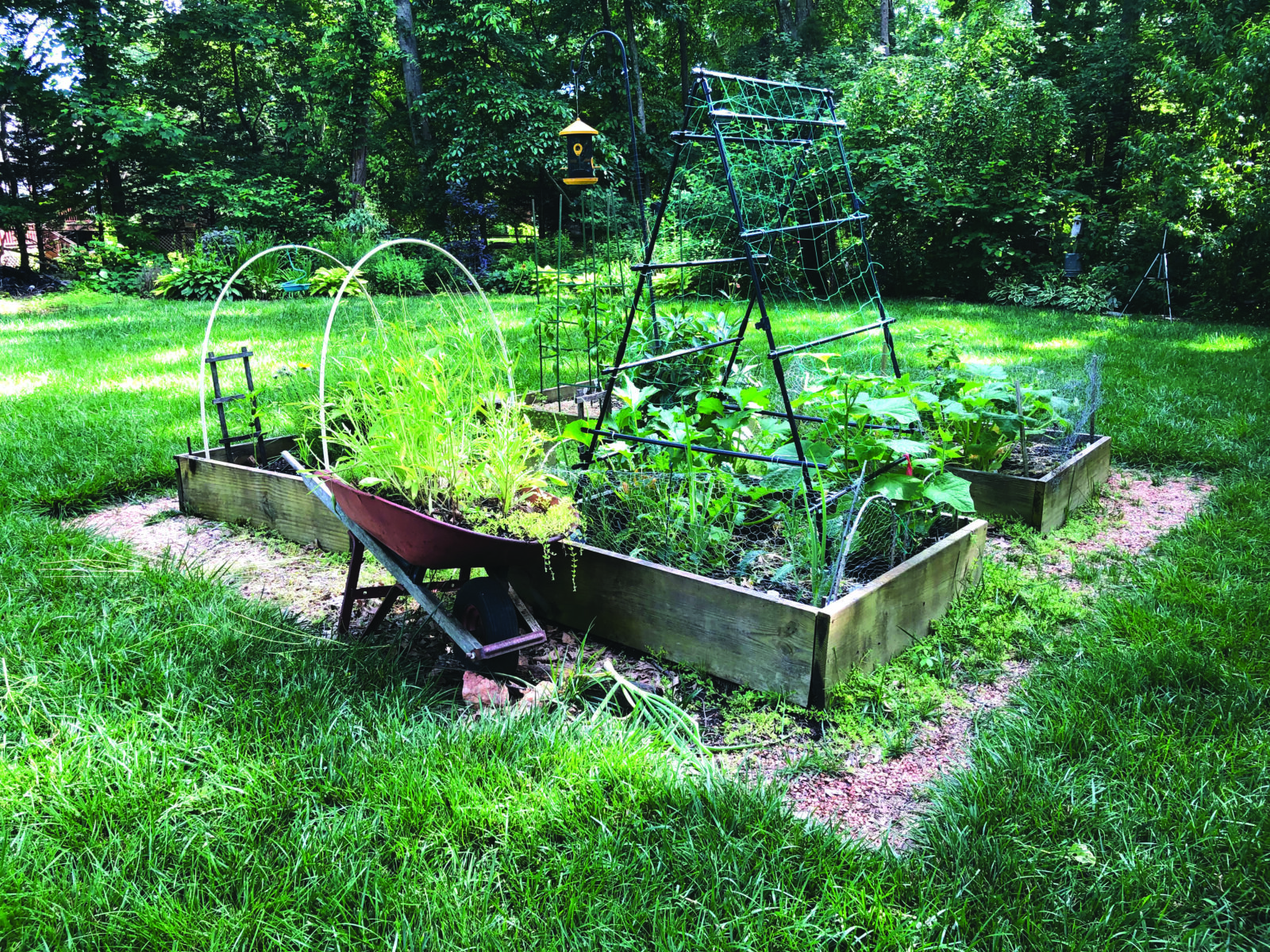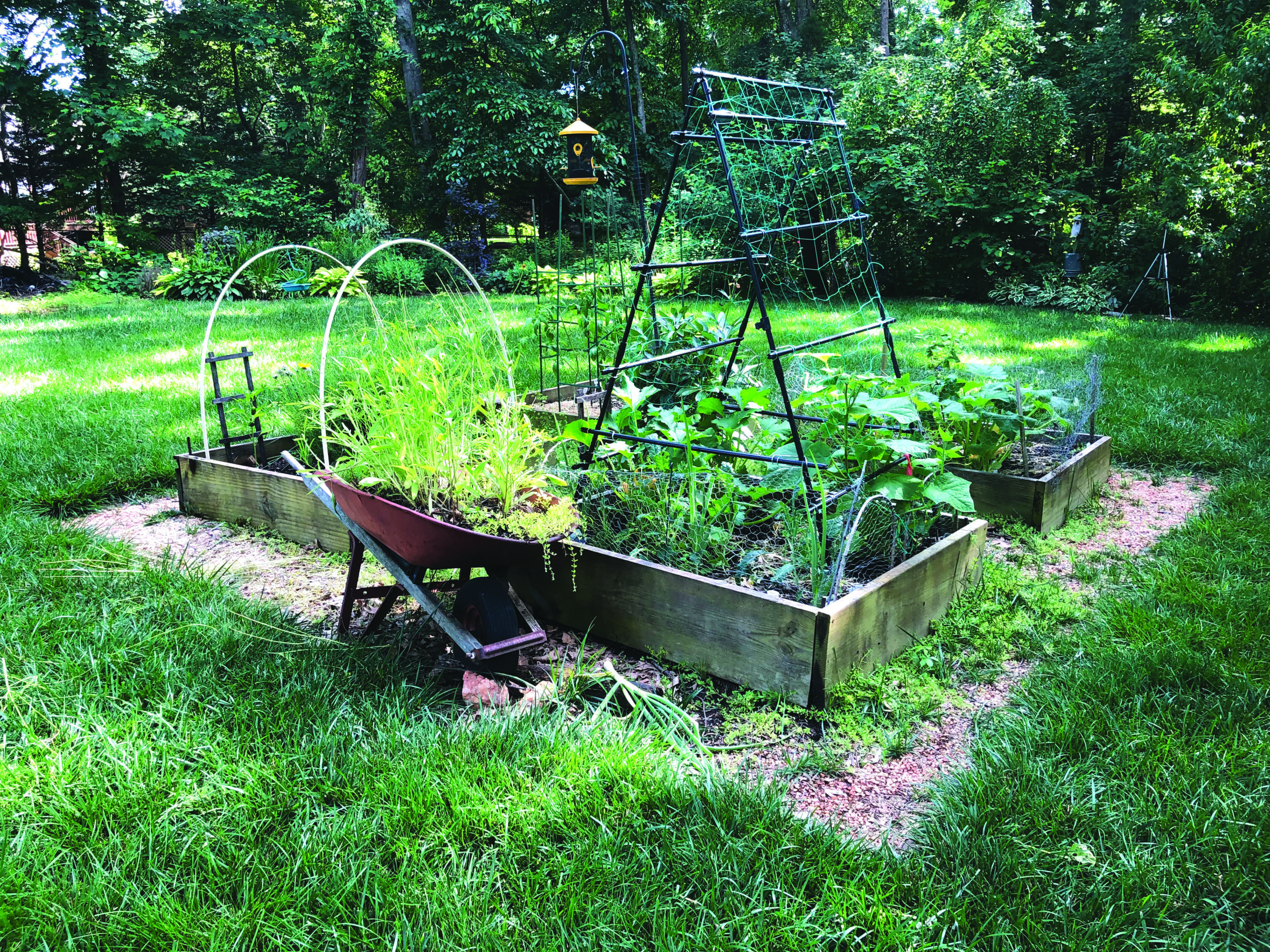Eat Your Vegetables — It’s Not Too Late! Veggies to Plant for the Garden Procrastinator

Written and photographed by Patrick Mulrooney
Back in April, many were writing about how to build a vegetable garden. With a quarantine order in place and uncertainty in the food supply chain, it could not have been a better topic. However, if you were like me and were too busy figuring out how to stay muted during Zoom meetings or foraging for toilet paper, you did not get around to it (priorities). But fear not, it is not too late! We will discuss the vegetables that don’t mind the summer heat and will persist into the cool temperatures of autumn.
First, a few basics: raised beds are the way to go as you can create your own soil and create drainage that might not be possible in Virginia’s heavy clay. It is crucial to amend the native soil directly under the raised bed and to have smooth transitions between soil types, so the water can travel down into the ground, beckoning the roots to follow and establish themselves. I prefer to break the clay with a mix of gravel, all-purpose sand (the orangish sand, made of larger particles than playground sand), pine bark mulch, and leaf or manure compost.
After this grueling ordeal, it gets easier and more fun. In addition to vegetables, you will want to plant herbs and a flower of some sort to increase pollination rates and add some color. As far as herbs, start cilantro, basil, parsley, sage, and oregano from seed right now. Plant the cilantro, basil, and parsley near each other as they prefer wetter conditions. In addition to flavoring dishes, most of the herbs also have insect-repelling properties.
As for the flower, I highly recommend borage (Borago officinalis). This self-seeding, nectar-producing, hardy plant will brighten your beds with blue and pinkish flowers and attract many busy pollinators. The blooms begin in June and will continue until first frost. Marigolds (Tagetes sp.) are another good choice, as they produce a compound called alpha-terthienyl which is toxic to several kinds of insects, fungi, bacteria, and viruses. They will also encourage deer and rabbits to enjoy your hard work from a distance. Although, if they are hungry enough, they will eat anything, so maybe install some fencing, garden cloth, or spray one of the readily available deer repellents.

Even though it is July, it is still possible to start a few vegetables from seed. Carrots, squash, zucchini, and cucumber are ready for the heat. In my experience, cucumbers do not like having their roots disturbed, so I would discourage transplanting them right now and recommend using seeds instead. Zucchini and ’cukes both prefer a lot of moisture, so be sure to water a minimum of 1” per week and add on the mulch! Carrots sown in mid-July will be ready for harvest in November. Brussel sprouts almost belong in this “from seed” category, but I recommend starting the seeds indoors during July. However, with an attentive eye and responsible watering, one can be successful with seeds.
At this time of year, some plants are simply not worth starting from seed; it’s a better bet to buy your tomato and pepper plants from the nursery and transplant them into your garden. Peppers have very few pests or diseases to worry about, but tomatoes will succumb to verticillium wilt in the right conditions. Thinning the branches out for air circulation and preventing its spread from the soil by applying a heavy mulch are useful strategies. The best approach is to look for verticillium-resistant varieties (they carry a “V” on the label) and rotating your crops to prevent planting the same plant in the same bed until three or four years have passed. Finally, the one vegetable that I would recommend before all others is the mighty sweet potato. This nutritional powerhouse does not mature for 90 to 120 days and is quite frost-hardy.
Most leafy greens need to be started during the coolness of spring or early fall, but there are a few heat-tolerant greens worth checking out. Green glaze collards are slow to bolt and are resistant to cabbage worms and loopers. Jericho romaine lettuce was introduced from Israel and is known for maintaining its sweet flavor when less hardy lettuces bolt and become bitter. For the spinach lovers, try the red Malabar summer spinach, but be sure to provide a trellis for growth.
There you have it. You know how to get away with an extremely late start on your garden. If you are anything like me, this information will probably come in handy every year. ML
This article first appeared in the July 2020 issue of Middleburg Life.


